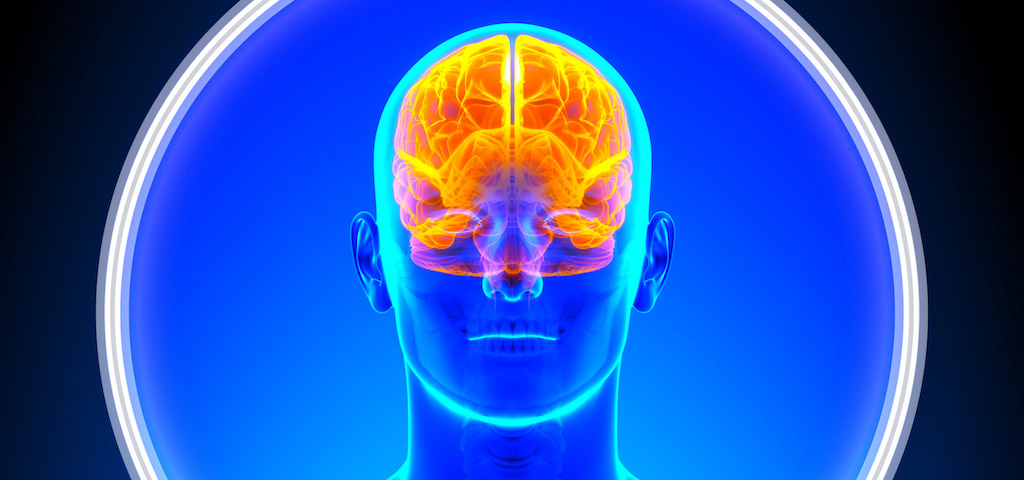Seeing the bigger picture

Sunnybrook Research Institute scientist Dr. Ali Sadeghi-Naini is leading a team of researchers that is developing new MRI methods and image-analysis tools to enhance treatment of metastatic brain tumours.
Cancers of the lung, breast and colon are among the most common types of malignancies in Canada, according to the Canadian Cancer Society. The good news is that people with these diseases are living longer owing to better treatments; unfortunately, they are more likely to have metastatic brain tumours, where cancer travels from its original site to the brain.
A research team helmed by Sunnybrook Research Institute (SRI) scientist Dr. Ali Sadeghi-Naini is developing new MRI methods and image-analysis tools aimed at making treatment of metastatic brain tumours more precise and effective by tailoring it to individual patients. In support of this work, Sadeghi-Naini was awarded a grant from the Natural Sciences and Engineering Research Council of Canada (NSERC) through the Collaborative Research and Development program. The project has a total value of $819,859.
“We are using quantitative imaging techniques to extract various features of a tumour, and then applying data mining and machine learning to identify those biomarkers that best correlate with outcomes of treatment. The purpose is to predict outcome of radiation therapy,” says Sadeghi-Naini, who is leading a team of experts in medical physics, oncology and radiology. Over the next three years, NSERC will provide $391,859, and Elekta will invest $428,000, through cash and in-kind contributions, via use of its radiosurgery system, the Gamma Knife Icon.
Sunnybrook was the first centre in Canada to treat people with metastatic brain tumours using the Gamma Knife Icon. The technology delivers radiation with pinpoint accuracy to many targets in the brain, thus sparing patients negative side effects of whole-brain radiation like seizures, memory loss and extreme fatigue. About 500 people have the procedure at Sunnybrook annually, during which doctors use computed tomography (CT) and MRI to guide delivery of the radiation. Both types of imaging are needed, because each provides important information. For example, the soft tissue contrast of MRI shows where tumours are, while CT imaging displays head shape, bone and the dimming of radiation as it passes through the skull.
By combining the images, however, errors like distortions in head shape can be introduced, notes Dr. Angus Lau, a scientist in Physical Sciences at SRI and a co-investigator on the grant. “We’re working on ways to make the MRI more geometrically accurate, as well as to get the CT information back just from the MRI. We’re trying to develop algorithms to fill in where the bone is on the MRI scan,” says Lau.
Streamlining the treatment planning process and minimizing the introduction of errors will enhance how radiotherapy is given, notes study co-investigator Dr. Arjun Sahgal, a scientist at SRI and deputy chief of radiation oncology at Sunnybrook. “Ultimately it’s about seamlessness. To reduce the overall error in our workflow means we can deliver a more precise treatment,” he says.
Rounding out the team are SRI scientists Drs. Greg Czarnota, Pejman Maralani, Hany Soliman and Greg Stanisz, and medical physicists Drs. Brige Chugh and Mark Ruschin. The group is also analyzing MR images of tumours for clues that can identify immediately after radiosurgery those patients who are responding well, something that, says Sahgal, radiation oncologists like him can’t determine until many months later.
Sadeghi-Naini is developing an image-analysis framework that measures cell density, blood flow and metabolism of tumours to distinguish people who will benefit from radiotherapy from those who will not, so that nonresponders can try another treatment, like surgery, more quickly. He notes that these aspects of tumour physiology have been linked to aggressiveness of cancer and responsiveness to treatment. “We will measure changes in such aspects of the tumour early after treatment to monitor the effect of treatment on the tumour microstructure and physiology. We will use such effects to predict treatment response,” says Sadeghi-Naini.
Lau says that metabolic MRI, for instance, can show biochemical changes in tumour cells after radiation long before these cells change in shape or size. The researchers are homing in on these biochemical shifts, like changes in protein content, to determine how they are linked to treatment response.
Extracting such biomarkers from medical images to learn features of disease that can’t be seen with the naked eye is a field called radiomics. Sahgal highlights the promise of radiomics to understand the biology of tumours, toward customizing metastatic brain cancer treatment. “If we can use the imaging to see who’s going to respond, we can say, ‘We’re going to treat you with either a high dose or low dose, depending on that signal. If we don’t expect you to respond to radiation—because about 20% of metastases will not respond—let’s cut that tumour out. Take the risk of surgery and take it out, as opposed to us irradiating it because we know that you’re not going to respond.’”
The Canada Foundation for Innovation provided infrastructure support through the Centre for Research in Image-Guided Therapeutics.






